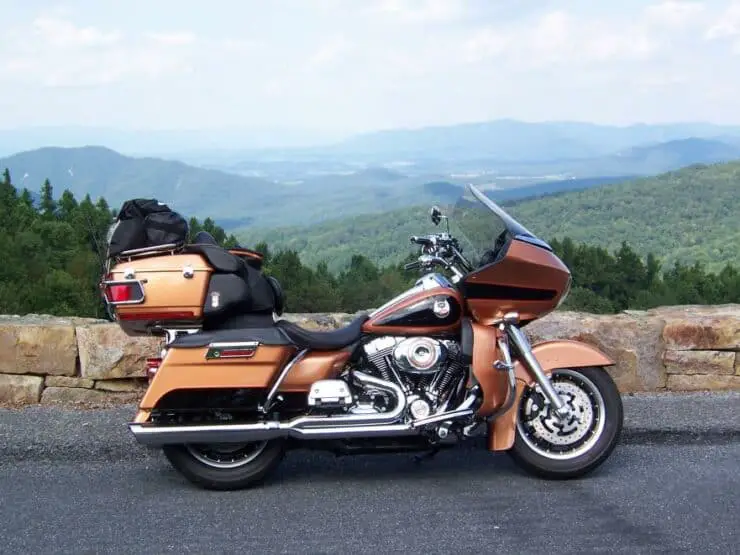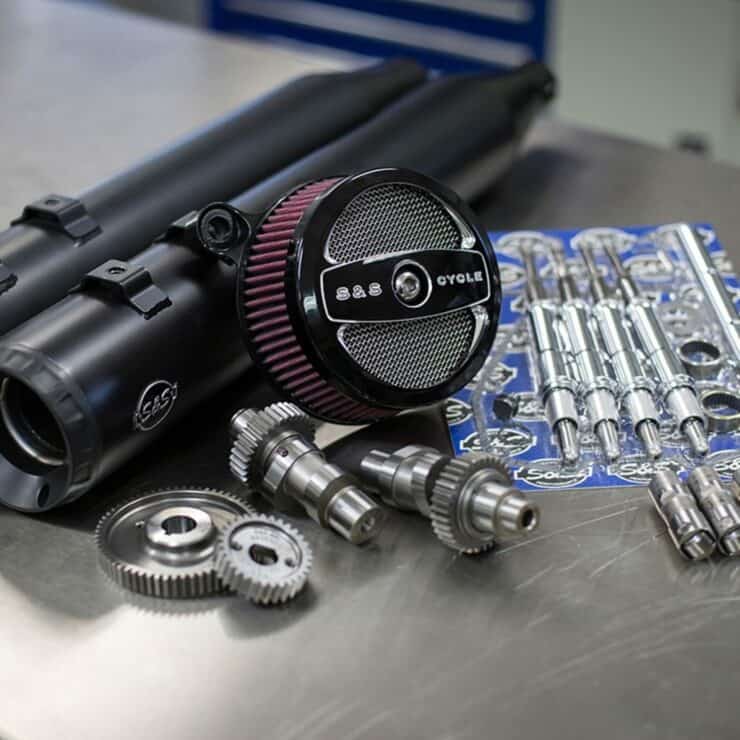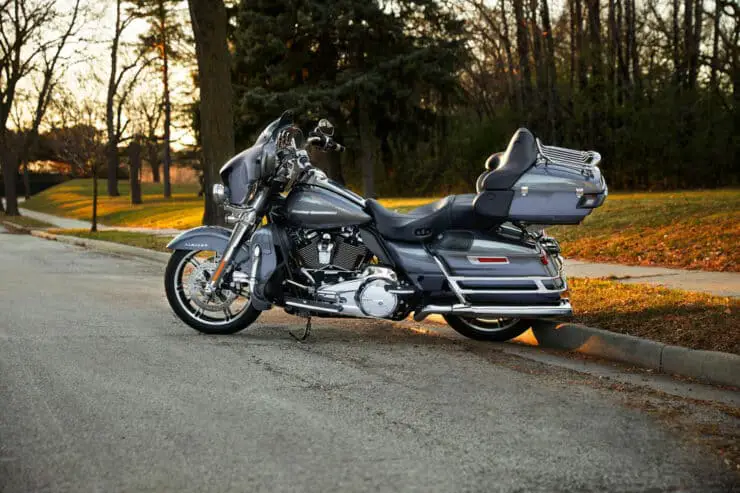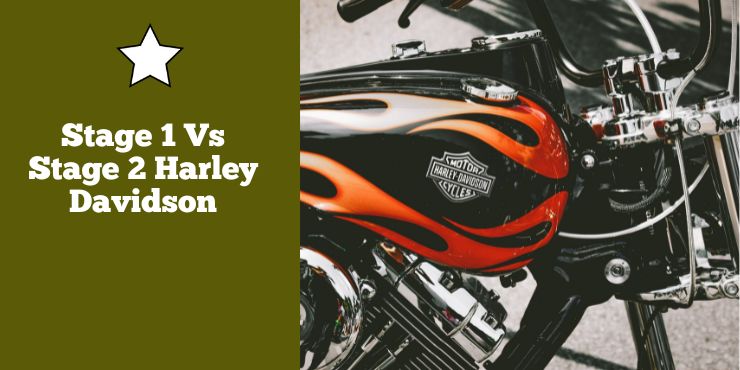If you’re a fan of Harley-Davidson motorcycles, you know that there’s a wide range of models to choose from. But did you know that Harley-Davidson offers two stages of motorcycles? With Stage 1 and Stage 2 Harley Davidsons, there are a variety of differences to consider when choosing the perfect ride. In this article, we’ll explore those differences in detail, so you can make an informed decision when selecting a Harley-Davidson of your own. So, let’s dive in and get exploring!
Stage 1 vs Stage 2 Harley-Davidson Comparison
Harley-Davidson motorcycles have long been admired for their distinctive rumble and powerful performance. Bikers looking to enhance engine power and a deeper exhaust note often turn to Motorcycle Performance Kit upgrades, specifically Stage 1 and Stage 2 modifications. These upgrades offer varying levels of performance enhancements and exhaust systems improvements.
Stage 1 upgrades are the most common modifications sought by Harley-Davidson bikers. They typically involve three key components – an aftermarket air intake, a high-flow air cleaner, and a performance-oriented exhaust system. These upgrades are largely aimed to optimize the airflow into and out of the engine, resulting in improved performance.
Meanwhile, Stage 2 upgrades build upon the foundation of Stage 1 modifications, further enhancing the engine’s performance capabilities. These upgrades will typically include high-performance cams, valve springs, and modifications to the intake and exhaust systems.

Engine power
A Stage 1 upgrade will offer a noticeable boost in engine power. By allowing more air to enter the engine, the combustion process will become much more efficient, resulting in increased HP and torque. Depending on the specific modifications, bikers will be able to experience a power increase of 5% to 15%, enhancing acceleration and overall performance.
Stage 2 upgrades will result in a significant increase in engine power compared to Stage 1. The high-performance cams will optimize the valve timing and lift, allowing more air and fuel into the combustion chamber. These features when combined with the upgraded valve springs and improved intake/exhaust systems will result in a power increase of 15% to 25% or more. Harley-Davidson bikers can easily expect enhanced acceleration, improved top-end power, and a much more exhilarating riding experience.
Exhaust system
The exhaust system is a key element of Stage 1 upgrades. Upgrading to a performance-oriented exhaust system, such as a free-flowing aftermarket exhaust, will not only enhance the bike’s sound but also improve exhaust gas flow. This will result in reduced back pressure and improve engine breathing, leading to much better performance and throttle performance.
While Stage 1 Upgrades focus heavily on improving the exhaust system’s flow, Stage 2 modifications will typically include upgrading to larger-diameter exhaust headers and high-flow mufflers. These compounds will further optimize the exhaust gas flow, reducing restrictions and enhancing overall performance. The exhaust note will become much deeper and more aggressive, providing a satisfying auditory experience.
Intake systems
In Stage 1 upgrades, the intake system will play a major role in optimizing airflow to the engine. Aftermarket air intakes and high-flow air filters are typically installed for increasing the volume and quality of air reaching the engine. These modifications enhance throttle response, improve fuel efficiency, and contribute to overall power gains. Stage 1 intakes are designed to work in conjunction with the upgraded exhaust system, allowing the engine to breathe more freely.
Stage 2 upgrades often involve more substantial modifications to the intake system. Bikers could opt for larger and more performance-oriented throttle bodies, which result in increased airflow to the engine. Upgraded fuel injectors and intake manifolds are quite common in Stage 2 builds. These enhancements further optimize the air-to-fuel mixture, resulting in additional power gains and improved engine performance.
Suspension systems
Stage 1 upgrades focus largely on improving the overall comfort and handling of the motorcycle. This can involve upgrading to aftermarket suspension and components, such as adjustable rear shocks or front fork upgrades. These modifications will enhance stability, ride quality, and cornering capabilities, which result in a smoother and more controlled riding experience.
Stage 2 suspension upgrades often take your Harley’s performance to the next level. Bikers might opt for high-performance suspension components such as fully adjustable suspension systems or inverted front forks designed for handling aggressive riding styles and track use. These upgrades result in enhanced stability, more precise handling, and improved traction, allowing the bikers to push the limits of their bikes with confidence.
Braking systems
Stage 1 upgrades for braking systems often involve improving the brake components’ feel and efficiency. Bikers might upgrade to aftermarket brake pads or braided stainless-steel brake lines for enhancing stopping power and reduce brake fade. These modifications will result in much more responsive and consistent braking performance, especially during spirited riding or under demanding conditions.
Stage 2 upgrades for braking systems focus on enhancing stopping power and control. Harley-Davidson bikers could opt for larger-diameter brake rotors, multi-piston calipers, or performance brake master cylinders. These enhancements will improve heat dissipation, reduce brake fade, and deliver exceptional braking performance even during track use or aggressive riding.

Advantages of Stage 1 Harley-Davidson models
Harley-Davidson motorcycles are known for their iconic style and rumbling V-twin engines. For bikers looking to enhance their bike’s performance without extensive modifications, Stage 1 upgrades will offer a compelling solution. These modifications come with many advantages. Some of the primary advantages of Stage 1 upgrades are –
#1. Increased power and torque
One of the main benefits of Stage 1 upgrades is the noticeable increase in power and torque. By improving the intake and exhaust systems, Stage 1 modifications will optimize the engine’s airflow, allowing it to breathe more freely. This will result in enhanced combustion efficiency and a substantial boost in horsepower and torque. The additional power gives riders improved acceleration, making overtaking and merging on highways a breeze.
#2. Enhanced throttle response
Stage 1 upgrade will significantly improve throttle response, offering an immediate and precise connection between the rider’s input and the motorcycle’s performance. With an optimized intake and exhaust systems, the engine can deliver power much more swiftly, making the motorcycle feel more responsive and eager to accelerate. This enhanced throttle response will add excitement and confidence to your riding experience.
#3. Deeper exhaust note
Upgrading to a performance-oriented exhaust system as a part of Stage 1 modifications will not only improve the bike’s performance, but also enhance its sound. Bikers can enjoy a deeper and throatier exhaust note that is characteristic of Harley-Davidson bikes. The richer sound will add to the overall sensory experience, making your ride much more enjoyable and providing satisfying auditory feedback.
#4. Improved fuel efficiency
Contrary to popular belief, Stage 1 upgrades could also result in improved fuel efficiency. With optimized airflow and combustion efficiency, the engine will deliver better fuel consumption. While the power gains could tempt you to twist the throttle more often, but a Stage 1 setup can actually result in more efficient fuel utilization. This will help you go further on each tank of gas.
#5. Compliance with legal and emission standards
Stage 1 modifications are designed to be compliant with legal and emissions regulations, which makes them a popular choice among riders. The aftermarket components in Stage 1 upgrades are engineered to meet or exceed these standards, ensuring that your bike remains street-legal and environmentally friendly.

Disadvantages of Stage 1 Harley-Davidson models
While Stage 1 upgrades for Harley-Davidson bikes come with many advantages, they have their disadvantages as well. It is important that you consider the potential drawbacks and trade-offs associated with these modifications. Here are some of the drawbacks of Stage 1 Harley-Davidson models.
#1. Limited performance boost compared to other upgrades
Although Stage 1 upgrades offer noticeable improvements in power, torque, and throttle response, it is essential to keep your expectations in check. Compared to more extensive modifications like Stage 2 or Stage 3 upgrades, Stage 1 modifications provide a relatively moderate performance boost. Harley-Davidson bikers looking for substantial power gains might find themselves wanting more, necessitating further upgrades down the line.
#2. Factory warranty implications
While Stage 1 upgrades are typically designed to adhere to legal and emissions standards, it is crucial that you consider their impact on your bike’s warranty. While some Harley-Davidson motorcycles allow for the installation of Screamin’ Eagle Performance Parts without voiding the factory warranty, bikers must thoroughly review their warranty parts and conditions. Any modifications beyond Stage 1 might void certain aspects of the warranty, leaving the owners responsible for any future repairs or replacements.
#3. Noise considerations
The enhanced exhaust note that comes with Stage 1 upgrades might not be welcomed by all bikers or communities. The louder sound produced by aftermarket exhaust systems might result in noise complaints or potential legal issues in certain cities. It is important to be mindful of local noise regulations and consider the impact of a more aggressive exhaust sound on your riding environment and community.
#4. Emissions compliance
Although Stage 1 modifications are designed for complying with legal emission standards, they might still result in higher emissions compared to the stock setup. Bikers who are concerned about their environmental impact must be aware that the modifications involved in Stage 1 upgrades might contribute to increased emissions. It is important that you balance the desire to improve performance with environmental responsibility.
#5. Potential for reduced reliability
Installing aftermarket components into your bike’s systems comes with the risk of potential reliability issues. Poorly designed or improperly installed Stage 1 components could result in mechanical problems or decreased long-term reliability. It is important that you choose reputed brands and have the modifications performed by professionals to minimize the risk of any reliability issues.
Advantages of Stage 2 Harley-Davidson models
For Harley-Davidson bikers looking for an exhilarating boost in performance and a dynamic riding experience, Stage 2 upgrades will offer an enticing solution. Building upon the foundation of Stage 1 modifications, Stage 2 upgrades will take your bike’s performance will take performance to the next level. Here are some of the primary advantages of Stage 1 upgrades in Harley-Davidson models that will help you unlock the potential of your bike.
#1. Significant power increase
One of the most compelling advantages of Stage 2 upgrades is the substantial boost in power. These modifications generally include high-performance camshafts, upgraded valve springs, and modifications to the intake and exhaust systems. The combination of these enhancements will optimize airflow and combustion efficiency, resulting in an increase in horsepower and torque. Stage 2 upgrades can deliver power gains of 15% to 25% or more, providing exhilarating acceleration and impressive top-end performance.
#2. Greater top-end performance
Stage 2 upgrades have been designed to maximize performance across the entire BPM range, including the high-end. The combination of high-end performance camshafts and improved intake/exhaust systems will allow the engine to breathe more freely at higher RPMs and deliver increased power and maintain strong performance at elevated speeds. Whether you are accelerating on the highway or simply enjoying spirited riding on winding roads, Stage 2 upgrades will provide the additional power needed to push the limits of your motorcycle.
#3. Deeper and more aggressive exhaust sound
Just like Stage 1 upgrades, Stage 2 modifications will also result in a deeper and more aggressive exhaust note. Upgrading to larger-diameter exhaust headers and high-flow mufflers will further enhance exhaust gas flow and increase the overall volume and character of the sound. The rich and powerful exhaust note will add to the sensory experience, complementing the improved performance of your Harley.
#4. Optimized suspension and braking
While not exclusive to Stage 2 upgrades, many bikers who opt for Stage 2 modifications often invest in complementary suspension and braking upgrades. These enhancements will ensure that your bike can handle the increased power and provide improved control and stopping power. Upgraded suspension components like adjustable shocks or inverted front forks and high-performance braking systems will contribute to a much more balanced ride.
#5. Customization and personalization prospect
Stage 2 upgrades will offer an opportunity for bikers to personalize their Harley-Davidson bike to a higher degree. With the increased power and performance capabilities, riders will be able to tailor their riding experience to their preference, whether it is carving through twisting roads or dominating the track. Stage 2 modifications allow riders to create a unique and tailored ride that matches their individual style and preferences.
Disadvantages of Stage 2 Harley-Davidson models
Stage 2 upgrades for Harley-Davidson motorcycles are renowned for their significant power gains and exhilarating performance. While the modifications do offer thrilling advantages, it is essential for bikers to carefully consider the potential disadvantages, too. Here are some of the main disadvantages that you need to keep in mind.
#1. Warranty implications
Stage 2 modifications often involve more extensive changes to the engine and related components, which might have implications for the bike’s warranty. Upgrading to high-performance camshafts and modified cylinder heads could void the factory warranty for engine-related issues. Riders should thoroughly review their warranty terms and conditions and consider the impact on their warranty coverage before proceeding with Stage 2 modifications.
#2. Reliability and longevity
Introducing more aggressive modifications to the engine such as modified cylinder heads and high-performance camshafts can increase stress and strain on various engine components. Although reputed brands and professional installation can mitigate potential issues, there is always the risk of compromising the bike’s reliability and longevity. Bikers need to be aware that Stage 2 modifications might require more frequent maintenance and upkeep to ensure optimal performance and durability.
#3. Fuel consumption
With the substantial power gains that come with Stage 2 upgrades, fuel consumption on your Harley-Davidson bike might increase accordingly. The engine might require more fuel to support the higher performance, resulting in decreased fuel efficiency.
#4. Riding comfort and practicality
The increased power and performance of Stage 2 modifications might result in a trade-off in riding comfort and practicality. The more aggressive camshafts and modifications to the engine might result in a rougher idle and decreased low-end torque, potentially affecting low-speed maneuverability and urban riding comfort. Moreover, the heightened performance could make the bike more challenging to handle for beginners and inexperienced riders in certain conditions. It is important that you strike the right balance between performance and practicality by considering your riding preferences and typical usage.
#5. Excessive noise
Stage 2 modifications can often result in a louder and more aggressive exhaust note. While this might be appealing for some bikers, it might attract unwanted attention, noise complaints, or even potential legal issues in certain areas with strict noise regulations. This is why you must consider the impact of increased exhaust on your riding environment, local laws, and the comfort of others.
Stage 1 vs Stage 2 Harley-Davidson: Cost comparison
Harley-Davidson motorcycles are known for their impressive design and extremely powerful performance. Bikers are always looking to enhance their motorcycles, and they turn to Stage 1 and Stage 2 modifications for unlocking additional power and customization options. However, it is important that you understand the cost implications associated with each stage before you embark on the upgrade. Here is the Stage 1 vs Stage 2 Harley-Davidson motorcycle cost comparison to help the riders make well-informed decisions based on their budget and performance need.
Cost of Stage 1
Stage 1 modifications typically involve upgrading the air intake, improving the exhaust system, and remapping the engine control unit. Here is a breakdown of the average cost associated with Stage 1 upgrades-
#1. Aftermarket air intake
The cost of a high-quality aftermarket air intake could range from $150 to $500 depending on the brand and design.
#2. Exhaust system
Upgrading the exhaust system will involve replacing the stock pipes with aftermarket options. The cost will vary depending on factors like materials, brand, and design, but it’ll typically fall between $500 and $1,500.
#3. ECU remapping
For optimizing the performance of the upgraded air intake and exhaust, an ECU remapping or tuning will be necessary. The cost of professional tuning services can range from $200 to $600, depending on the complexity and time required.
Overall, the total cost of Stage 1 modifications for a Harley-Davidson bike can range from around $850 to $2,600 considering the variability in component prices and installation fees.
Cost of Stage 2
Stage 2 upgrades will take the performance enhancements to the next level by focusing on the engine’s internals such as cylinder heads, camshafts, and increasing displacement. Here is an overview of the average costs of Stage 2 modifications –
#1. High-performance camshafts
Upgrading to high-performance camshafts can cost anywhere between $200 and $1,000 depending on the brand and specifications chosen.
#2. Cylinder heads
Aftermarket cylinder heads can greatly improve engine performance, but they come at a higher price. This cost can range from $1,000 to $3,500 or more depending on the brand.
#3. Increased displacement
Increasing the engine displacement will involve options like installing larger cylinders and pistons. The cost will vary depending on the specific modifications required, but it will range from $1,500 to $5,000 or more.
Considering the variability in component prices and professional installation fees, the total cost of Stage 2 modifications for a Harley-Davidson bike can range from around $2,700 to $9,500 or more.
See also: Is it Too Windy to Ride a Motorcycle?
FAQs
What are the differences between Stage 1 and Stage 2 Harley-Davidson upgrades?
Stage 1 upgrades typically involve improvements to the air intake, exhaust, and fuel delivery systems of the Harley-Davidson, allowing for more power, better performance, and improved sound. Stage 2 upgrades involve modifications to the engine, such as camshafts, pistons, and other internal components. These upgrades are designed to further increase power and performance and may require additional components such as a performance chip or aftermarket ECU.
What are the benefits of Stage 1 and Stage 2 Harley-Davidson upgrades?
Stage 1 upgrades provide improved power, performance, and sound, as well as improved fuel efficiency. Stage 2 upgrades usually provide even greater gains in power and performance, as well as improved sound. In addition, Stage 2 upgrades may also provide improved reliability, making them ideal for long-distance riding or track days.
What should I consider before upgrading my Harley-Davidson engine?
Before upgrading your Harley-Davidson engine, it is important to consider the cost of the upgrades, the availability of the necessary components, and the potential risks associated with the modifications. It is also important to ensure that your engine can safely handle the increased power and performance of an upgraded engine. If you are unsure, it is best

